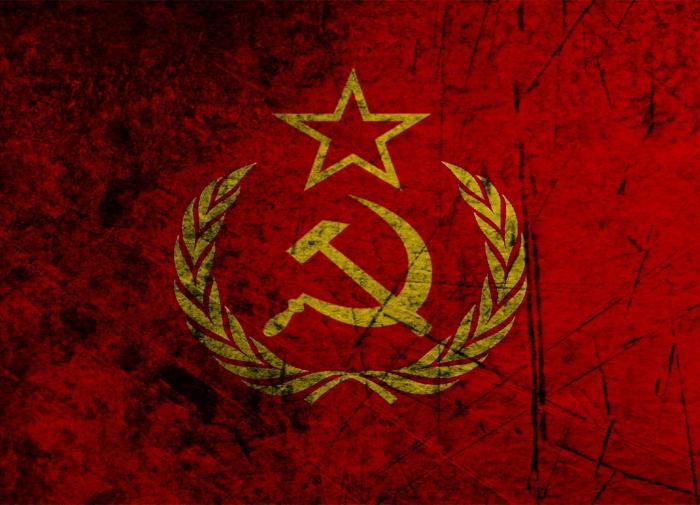Belovezha Accords: 30 years since the biggest catastrophe of the 20th century
Thirty years ago, on December 8, 1991, the Belovezha Accords, signed in Belarus, led to the collapse of the USSR.

Yuri Voronin, Chairman of the Commission of the Supreme Soviet of the RSFSR on Budget, Plans, Taxes and Prices, First Deputy Chairman of the Supreme Council of the Russian Federation (in 1991) recalls the events of 30 years ago.
According to Russian President Vladimir Putin, the collapse of the USSR was the biggest geopolitical catastrophe of the 20th century. After the collapse of the USSR, as many as 25 million Russian people found themselves abroad overnight.
In an article for The Noviye Izvestia newspaper, Voronin recalled that after the failure of the State Emergency Committee in November 1991, consultations between representatives of the republics on the draft Union Treaty were resumed in Novo-Ogaryov.
The leaders of the republics were racing their way out of the USSR, and by December 1, practically everyone had fled from the Soviet Union, except for Russia and Kazakhstan.
Nevertheless, the President of the USSR, Mikhail Gorbachev, was still writing messages to parliamentarians of all republics, urging them to discuss and sign the Union Treaty.
The treaty was drawn up in such a way it was impossible to sign it. The formation of a civil society was declared to be the purpose of the new type of state. The new state would have been formed as a result of a coup that would have taken place against the will of the people expressed in the referendum on March 17, 1991. Most importantly, the Constitution of the USSR had been removed.
On December 8, Boris Yeltsin, Leonid Kravchuk and Stanislav Shushkevich announced the dissolution of the USSR and the creation of the CIS — the Commonwealth of Independent States. Subsequently, Gennady Burbulis, Sergei Shakhrai, Yegor Gaidar and Andrei Kozyrev would often recall how they allegedly saved the crumbling Soviet Union from the nightmare of a civil war.
Yegor Gaidar straightforwardly attributed the authorship of the document to himself. In fact, however, it was Sergei Shakhrai, who proposed, put down all the formulations and wrote documents on the collapse and termination of the USSR.
According to him, the Soviet Union was established in 1922 by four republics:
- the Russian Soviet Federative Socialist Republic,
- the Ukrainian Soviet Socialist Republic,
- the Belarusian Soviet Socialist Republic,
- and the Transcaucasian Socialist Federative Soviet Republic.
As long as the latter had not existed for a long time, the three republics supposedly had full legal right to state that "the Soviet Union as a subject of international law ceases to exist." The fate of 12 other republics was unclear at this point.
When those people were writing the texts of the documents about the creation of the CIS, none of them were thinking about the fate of the Russian-speaking population in the newly emerged states. For decades, the idea of the "Russian World" has never found a way to become politics.
The main concept of the destruction of the state was formulated as follows: "The creator of the collapse of the USSR was the people."
Years later, on June 5, 2005, Leonid Kravchuk said in the Ukrainian Parliament that if only he knew what would be happening in Ukraine, he would rather chop off his hand than sign the Belovezha Accords.
Nevertheless, Mikhail Gorbachev then had had all the powers to prevent the catastrophe from taking place. He had not fulfilled his direct duties and should therefore be held accountable for the collapse of the state.
The same day, on December 8, 1991, George W. Bush called a press conference and announced that the USSR no longer existed, and that the US won the Cold War. According to him, it took $5 trillion to liquidate the Soviet Union.
At the same time, Boris Yeltsin was trying to convince everyone that the collapse of the USSR was an objective and historical process that came as a natural consequence of the processes that had developed over the past time.
Any knowledgeable lawyer would understand that without a preliminary change in the Constitution of the USSR, not a single body of the RSFSR, let alone an official, had the right to sign any document on the termination of the Treaty on the Creation of the USSR.
It was an unconstitutional act, to say the least. The Supreme Council of the RSFSR violated more than 30 articles of the Constitution of the RSFSR that had been in force at that time.
It is worth noting that five people's deputies, members of the Supreme Council of the RSFSR — Baburin S. N., Isakov V. B., Konstantinov I. V., Polozkov S. A., Lysov P. A. — openly opposed the collapse of the USSR and voted against the ratification of the Agreement on the Establishment of the CIS.
It was Bush's announcement of USA's victory in the Cold War that laid the foundation for the new American ideology — triumphalism and exceptionalism. The break-up of the USSR was a consequence of the actions taken by Mikhail Gorbachev, Boris Yeltsin and their teams.
It was not just the map of the world that lost the USSR. Russia lost 30 percent of its territory, 50 percent of the population (from 300 to 150 million) — the Russian and other peoples were artificially dismembered.
In fact, the Russian neo-democrats did everything possible to destroy the great power, the country, in which they had grown up.
The events of 30 years ago turned out to be fatal for the Russian economy too: it has not been able to rise on its feet for 25 years now.
Subscribe to Pravda.Ru Telegram channel, Facebook, RSS!


